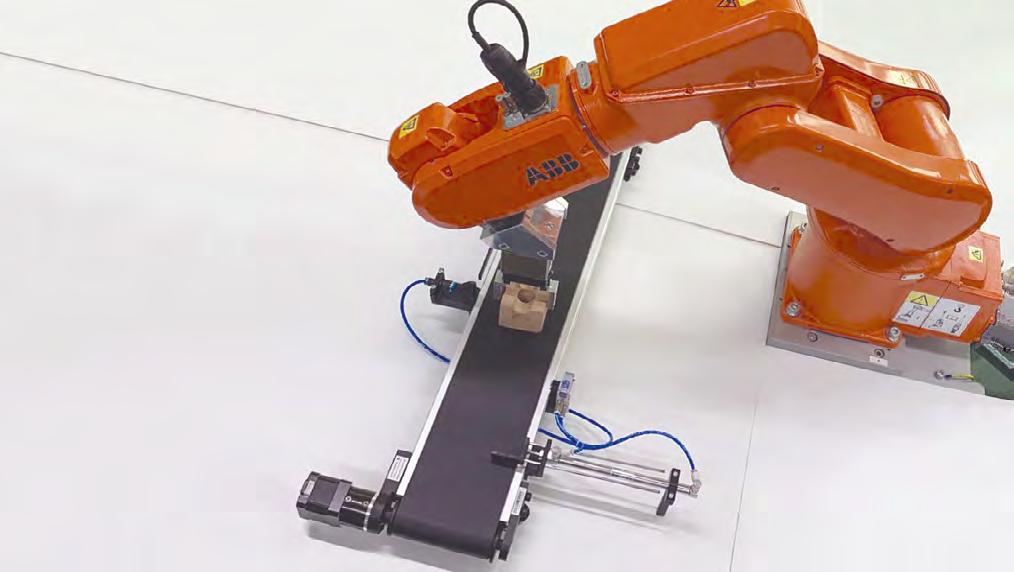
2 minute read
Guided Policy Optimization for Position Tracking with a Robot Arm
Reinforcement learning (RL) seeks an optimal policy for an agent to optimize cumulative rewards. RL techniques demand many interactions with the real world, which is only feasible in some robotics applications. Training data are available in simulation, but such simulations suffer from under-modeling and uncertainty, needing more accurate models of the environment. Meanwhile, robotic assembly requires high repeatability in an uncertain environment representation. One common approach is to hierarchically decompose the robotic task into tractable minor problems.
Mahdi Nobar
Method Overview
Task decomposition limits the RL to learn a policy by interacting within the area around the target location, improving the sample efficiency of the method [1]. We propose to learn local policies in a smaller subspace around the moving target location for a robot arm performing object assembly on the fly. We render a realistic simulation of the proposed method shown on Figure 2 inside “Robotic System” block.
We use an inverse kinematics position controller with weighted tracking feedback error, called Model-based (MB) controller, to let the robot end-effector reach the vicinity of the moving target. Furthermore, we train a Soft Actor-Critic (SAC) policy [2] in the robot's joint space using the joint angles and the robot tip cartesian relative position as our states. Figure 2 represents the block diagram of our hybrid controller to combine these two controllers. As soon as the physics-based controller reaches close enough to target location, the switch case activates the learning-based controller to guide the end-effector precisely reaching its target location.
Results and Conclusions
We demonstrate the accuracy and sample efficiency of our hybrid controller in simulation, concerning SAC-only and MB-only controllers, to track a moving target on a conveyor belt. The table below shows the root mean squared error in mm of 100 trials for tracking a moving object with an additive disturbance to target, initial, or both locations. We realize that our hybrid controller is more accurate than other methods.
Perspectives
This research is a preliminary study to demonstrate the possibility of overcoming the modeling uncertainties in a complex environment for precise motion control of robot assembly on the fly. We expand this research in several directions, including
• Monte-Carlo validation of the results
• Adapting the framework for robot assembly on the fly task
• Sim-to-real transfer of information for sample-efficient training in the robot cell
• Analyzing robustness to various parametric and modeling uncertainties in the robot cell

References
For our reward function, we define a region of attraction as a sphere around the target in which we assign a large reward. In contrast, the reward smoothly decreases as we move further away from this region. The hybrid controller requires much fewer episodes to train the learning controller, as shown on the learning curve below.
[1] Michelle A. Lee, Carlos Florensa, Jonathan Tremblay, Nathan Ratliff, Animesh Garg, Fabio Ramos, and Dieter Fox. "Guided uncertainty-aware policy optimization: Combining learning and model-based strategies for sample-efficient policy learning." In 2020 IEEE International Conference on Robotics and Automation (ICRA), pp. 7505-7512. IEEE, 2020.
[2] Haarnoja, Tuomas, Aurick Zhou, Pieter Abbeel, and Sergey Levine. "Soft actor-critic: Off-policy maximum entropy deep reinforcement learning with a stochastic actor." In International conference on machine learning, pp. 1861-1870. PMLR, 2018.
[3] Eugenio Chisari, Alexander Liniger, Alisa Rupenyan, Luc Van Gool, and John Lygeros. "Learning from simulation, racing in reality." In 2021 IEEE International Conference on Robotics and Automation (ICRA), pp. 8046-8052. IEEE, 2021
Team Mahdi Nobar, Doctoral student, mahdi.nobar@fhnw.ch Prof. Dr. Jürg P. Keller, juerg.keller1@fhnw.ch










